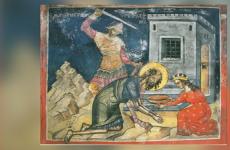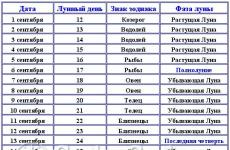StopHam liquidated, but alive? StopHam Movement: Who Are These People And Where Do They Get Their Money? Stopham sponsors
The Moscow City Court liquidated the Stop Ham public organization. This was done at the request of the RF Ministry of Justice for “repeated gross violations of the law”. Stop Hama promises to continue their promotions after re-registration.
The Moscow City Court liquidated the Stop Ham public organization, whose activists aggressively fought against illegal parking by pasting stickers on the windshields of violating cars. Stop Ham was created by the commissioners of the pro-Kremlin Nashi movement, praised by President Vladimir Putin, but in the end the movement was liquidated at the request of the Ministry of Justice for “repeated gross violations”. Stop Hama promises to continue their actions and re-register, changing the name of the “two commas”.
When and why was Stop Ham created?
Stop Ham is a non-profit organization founded in 2010 by the commissioners of the pro-Kremlin youth movement Nashi. The main goal of Stop Ham was the fight against traffic violations: parking in the wrong place, self-seizure of city land for parking, the use of sidewalks to move cars.
In July 2010, the project was presented at the Seliger forum and approved by the then Minister of Internal Affairs of the Russian Federation, Rashid Nurgaliev. He suggested that activists of the movement "work together with the traffic police so that an employee is assigned to each group."
In August 2013, the activists of the movement were supported at the "Seliger" by Vladimir Putin, who said: "You are doing a very important and good deed - you are fighting rudeness." The President was then presented with a T-shirt with the inscription "Stop Ham".
How Stop Ham activists work
The project participants are looking for improperly parked cars that interfere with those around them, and if there is a driver in the car, they ask him to park.
In the event of a refusal or in the absence of a driver, a round sticker with the text “I don’t care at all, I park where I want” is glued to the windshield of the car. The process is often accompanied by conflicts with drivers accusing activists of property damage and fights.
The activists record their communication with them on video cameras, after which they edit the videos and post them on the Internet: on YouTube, VKontakte and on the official website of Stop Ham. Videos bring good income for the movement: the service for evaluating the profitability of YouTube channels SocialBlade has calculated that activists can earn up to $ 192,000 a year on their channel.
In addition, in 2013, within the framework of presidential grants, Stop Ham received 4 million rubles for its activities, in 2014 - 6 million rubles, in 2015 - 8 million rubles.
Legal side of the issue
Most often, drivers accuse Stop Ham activists of illegal video filming (violation of privacy) and damage to property with stickers. However, in accordance with Art. 152.1 of the Civil Code of the Russian Federation, the consent of a citizen to the publication of his image is not required if it is obtained during filming in places open to general visits. Lawyers also note that the sticker cannot be considered property damage and poorly assess the prospects for bringing activists to administrative responsibility.
In 2015, the Main Directorate of the Ministry of Justice in Moscow applied to the Moscow City Court with a statement to liquidate the organization and exclude information about it from the Unified State Register of Legal Entities (USRLE) after the department “revealed repeated gross violations of the law in the organization’s activities”. The court satisfied the claims on October 12, 2015. This decision was not appealed, therefore, in the manner prescribed by law, information about the organization was excluded from the Unified State Register of Legal Entities.
Loud scandals with Stop Ham activists
The movement gained wide popularity in 2012 after a conflict at the Evropeyskiy shopping center in Moscow with the wife of Tamerlan Mingaev, the deputy plenipotentiary of Chechnya under the President of the Russian Federation. The incident ended with a fight involving the official’s son Islam Mingayev and his friends. On the fact of the fight, a hooliganism case was initiated. After that, the head of Chechnya, Ramzan Kadyrov, dismissed the official in connection with the "incorrect behavior of his wife."
On April 18, 2013, the activists asked Margaret Arakelyan, a consultant of the legal department of the Central Election Commission, to remove the car from the pedestrian crossing, but she refused and drove the car at one of the activists, almost running over him. The next day, the head of the CEC, Vladimir Churov, apologized for the employee's behavior.
On July 8, 2013, Tatyana Smoryakova, wife of the head of the Maryino district council Alexander Smoryakov, knocked down two movement activists who were trying to block her path on the sidewalk. The head of the council came to the place and defended his wife by writing an application against the activist. The parents of the downed activist who arrived, filed a counterclaim for perjury. The day after the conflict, Alexander Smoryakov resigned.
On February 10, 2015 in St. Petersburg, movement activists tried to stop a car driving along the sidewalk. As a result of the scuffle, young people were beaten, three were hospitalized with moderate injuries. Two participants in the attack on Stop Ham were later given suspended sentences.
One of the latest sensational episodes of Stop Ham's activities was a fight between a movement activist and Olympic champion in artistic gymnastics Alexei Nemov in February 2016 in Moscow.
Where does Stop Ham work?
There is no exact data on the number of activists in the movement. According to the leader of Stop Ham, Dmitry Chugunov, the organization has branches throughout Russia - in Moscow, St. Petersburg, Krasnodar, Novosibirsk, Yekaterinburg and other cities.
According to one of the leaders of the Moscow "Stop Ham" Kirill Bunin, the movement carries out four actions a week. The backbone of the Moscow "Stop Ham" includes about 40 people. About 60 more people participate in one-time promotions. Since 2014, the Stop Ham branch has been operating in Crimea.
There are also followers of the movement in Ukraine, Moldova and Belarus. Their legal status is unknown.
Evgeny Kozichev, Evgeny Fedunenko, Olga Kalinina, Dmitry Shelkovnikov
Dmitry Chugunov: "If this is an attempt to find a black sheep in a herd of whites, then this is strange, because then all the sheep will turn out to be black."
A year earlier, four activists were severely beaten in St. Petersburg during a rally against driving on the sidewalks. In March 2016, their offenders received suspended sentences.
Budgetary funds, according to Dmitry Chugunov, were spent on "the development of regional divisions." In particular, the purchase of video cameras and consumables for them. A considerable part of the millions, says the head of Stopham, is spent on printing anti-hammer stickers. In addition, the organization pays for the labor necessary for the functioning of employees: from an accountant to a video editor.
“We do not know what these claims are, ”. - said "MK" the chairman of "Stopham". According to him, they learned about the claims of the Ministry of Justice in Stopkham only today, despite the fact that the process began in October 2015. The Ministry of Justice did not notify the organization of any violations, and they were not summoned to court either.
In the unified register of legal entities opposite the organization it is written - it ceased activities by a court decision on the basis of Art. 29 of the Federal Law "On Public Associations". According to the article, the organization is obliged to inform the Ministry of Justice about the continuation of its activities, publish reports on the use of its property, and, in case of receiving funds from foreign sources, report on their volumes. Failure to submit these documents may be a reason for exclusion from the register.

MK has not been able to find a single Stopham financial report since 2013, either on the website of the Ministry of Justice or in the Counterfocus database.
“We have all the reports,” Dmitry Chugunov assured MK. “Whether they were published or not, I won’t lie, I don’t know for sure, but if necessary, we are ready to provide them.” The Stopham chairman recalled that once a quarter the organization submits a detailed financial report to the grant operator (they are not in the public domain - author). “The grant operator has no complaints, it’s strange that the Ministry of Justice has them,” Chugunov said. The only thing that can be counted as foreign funding, he said, is the income from YouTube ads from StopHam's commercials. “If this is an attempt to find a black sheep in a flock of whites, then it is strange, because then all the sheep will turn out to be black. Many bloggers monetize YouTube, ”Chugunov said.
The last presidential grant, 8 million, has not yet been fully spent. “The money will return to the treasury, we cannot use funds from blocked accounts,” Chugunov noted.
According to Chugunov, "Stopham" will continue its actions, in addition, he will defend the restoration of the legal entity in court, if it does not work out, he will create a new one.
Evgeny KORCHAGO, attorney:“Notices of the court session should be sent by the court to the address where the legal entity is registered. It arrives at the post office, and the postman puts a notification in the mailbox that you need to come to the post office for this letter. The fact is that if within 7 days the legal organization does not appear for notification, then the legal obligation of the court is still considered fulfilled. In this case, if StopHam does not receive mail notifications at its legal address, then this is its problem, just like any other organization. "
Participate in an online survey
The head of the press service of the St. Petersburg branch of the movement, Alexander Boglovsky, agreed to give an interview to the site.
- Let's get straight to the point. There are many articles circulating on the Internet, written by someone on their own guesses. They write all kinds of conspiracy theories that StopHam - these are the followers of Navalny, friends of Putin, and so on. We would like to know everything directly. The first question that probably interests everyone: where does the money come from?
Well, regarding the financial issue, I can immediately say that the grants received by the movement in Moscow do not reach us. Only stickers come to us from the capital. We spend money on video equipment partly from our own pockets, partly from the "budget" of the organization. As everyone knows, we have a channel on Youtube, which brings a small income to the "budget". In a good month, it can be 40 thousand rubles. Part of this amount goes to hosting for our site, part to equipment: all kinds of mounts, lenses, replacement of cameras broken during the raid. Something is paid to the organizers. Another part is spent on advertising on social networks. Of course, this amount is not enough for everything, so you have to spend your personal funds. Conversations that we have investors or that we are financed by the Navalny bloc are disinformation. We do not have any investors other than ourselves. Well, we have nothing to do with Navalny.
- What about people? How are volunteers "recruited"? Who are all these people who go to raids?
We have a VKontakte group and a website where we publish announcements about a raid, indicating the place and time of the meeting. The main requirement for participants is the age of majority. Several organizers and operators from the backbone that have developed over several years go there, plus new volunteers who want to take part. The main staff in St. Petersburg numbers about 300 people who take an active civic position. Naturally, everyone does not go to raids at once. Several organized people, plus those who voluntarily decided to attend the action from among the new volunteers, go there. Absolutely everyone participating in the action is ordinary average people who are tired of rudeness on the roads (parking lots and sidewalks).
- Why, from your point of view, is all this activity being carried out? What is the main task of the movement?
We are pursuing two goals, one of which is very difficult to achieve, the second is simpler. Re-education is a difficult task. If you look at European countries, you parked incorrectly - a huge fine, drove along the sidewalk - a revocation and a fine, did not let a pedestrian pass at the crossing - a fine. That is, the attitude to boorish behavior is very strict.
We, of course, also have fines, but how often have you met someone being fined for not letting a pedestrian pass? Are there many traffic police officers or video cameras found on sidewalks and parking lots? By our actions, we are trying to prevent a boorish attitude. Directly in raids, we try to explain to violators that they are behaving inappropriately. And then, putting the video for public viewing, we hope that people who have seen everything that happens will not want to commit such illegal and immoral actions. That is, they will be re-educated, change their attitude.

The second goal is somewhat more realistic and achievable. A huge part of our audience is young people who are now either studying in driving schools, or preparing for this, or have already graduated, but still do not have a conserved understanding of the rules of the road. That is, their attitude to all "minor" violations has not yet developed. And we are trying to influence them, to foster a driving culture from the "early years of the motorist". I hope that our videos are able to awaken respect for others in people.
- How did the movement begin? Where did it all come from?
The founder of the movement is Dmitry Chugunov. One fine day he was finally tired of seeing rudeness on the streets of Moscow. He invented and printed several stickers "I don't care at all, I park wherever I want," and went to "fight" alone. He approached the cars that obstructed the passage, said to the drivers something like: "Do you know that you are obstructing the movement of other people? Please park your car so as not to interfere, or I will stick this sticker for you."
Often people rearranged their cars, but it was not without incidents. He filmed all his actions and posted them on the Internet. Then he found like-minded people, and this is how the StopHam movement was born in Moscow. Then, seeing this movement on the Web, people of solidarity from other regions decided to follow the example, and regional Stopkham blocs appeared, including ours in St. Petersburg.

How is the coordination of movement and shares going?
The locations of the actions are determined mainly by residents. We receive letters and photographs of violations, we choose the most "hot" places and go there. Organizers communicate with violators directly on the spot. The selection of organizers is very strict in order to prevent illegal actions on the part of the movement's activists. Over the course of several raids, we monitor the actions of volunteers and, based on their behavior, we can offer them to become organizers.

The main requirements for an organizer are restraint and culture. Restrained obscene splash is not allowed. The organizer must also be active. A restrained and cultured person, indifferently standing still and taking only the position of an observer, will hardly help us as an organizer. Such, of course, are also needed, because all volunteers are our support and safety net, both active and passive. However, you can become an organizer only by taking an active civic position, as well as being able to convey information to anyone, remaining within the bounds of decency, and the law, of course.
- What happens after the action? Do you send the footage to the traffic police, do your "clients" pay fines for their offenses?
No, we do not have the authority to collect fines, and we do not send videos to the traffic police. Our task is not to "punish" violators, but to warn them. Sometimes, if a traffic police squad is sent with us on a raid, then fines are issued on the spot, but this does not happen often. Employees cannot travel to places where an offense is likely to occur without a special order (special operation). After all, if the offense really happened somewhere, and the traffic police are busy with us, then nothing good will come of it. Another question is if unscrupulous drivers decide to inflict any material (smashing cameras, tearing clothes) or, God forbid, physical damage to our activists (fights happen, sometimes activists are "rolled" on the hood). Naturally, we do not leave such actions unpunished, but we draw up statements to the police, after which procedural actions and court proceedings follow.

- If not everything went "smoothly" and the activist is injured in the raid, do you provide support? For treatment, for lawyers in court?
Certainly! As far as possible and strength. Unfortunately, there were cases when activists received beatings and fractures. We help with treatment, that is, for example, if you need to apply a cast, then we, and myself, are ready to pay for an easy and comfortable cast. The principle "with the world on a string" works here. We do not force any of the activists to donate money for treatment, everything is voluntary. The situation with the courts is somewhat different. We, of course, did not study to become a lawyer, but we are well-versed in the legal field and are able to provide legal assistance to our associates ourselves, without resorting to the help of expensive services of lawyers. Although now I am negotiating with one law firm, which, perhaps, will be able to provide us with assistance in the future if our strength is not enough.
On the liquidation of the public movement "StopHam" for numerous violations of the law and canceled the decision of a lower instance.
The representative of the Ministry of Justice confirmed that one of the notices of violations committed by the organization had really not been delivered, but at the same time asked the Armed Forces to leave the decisions of the Moscow City Court unchanged.
Like Gazeta.Ru, its excessive scandalousness could have led to an attempt to liquidate the once pro-Kremlin project. Sources close to the Kremlin noted that StopHam turned out to be a poorly managed project with too many complaints.
Chugunov does not rule out this either, according to whom activists during their raids could cross the road to “the wrong people”.
“For six years we did not make any exceptions for anyone, did not look at ranks or positions,
- Chugunov says to Gazeta.Ru. - And they showed these people in situations where they violate, are rude. It worked out to find a formal reason to close us down, but in the end it only made us stronger. Soon we will receive international status and open new branches abroad, in addition to those operating in Chisinau and Yerevan. "
The interlocutor noted that the positive decision of the Supreme Court on the appeal did not come as a surprise to them. “The decision of the Moscow City Court did not stand up to any criticism from a legal point of view,” Chugunov notes. -
For a very formal violation - a one-time failure to submit two types of reporting - a decision was made not on a fine, not on the suspension of activities, but immediately on liquidation. The decision was taken in great haste and with a large number of violations.
For example, a letter stating that we need to appear at the Moscow City Court came to us on Friday evening, and the meeting was scheduled for Monday morning. That is, we could not physically receive the letter and prepare for the trial. Now we have presented irrefutable proof of our innocence. "
“In two months there will be a formal decision by the Moscow City Court, where the case has returned, and only then will our account be unblocked for doing business,” he explains. “But this circumstance did not and does not prevent us from continuing our activities: activists take to the streets, which once again proves that we are a non-profit project. Yes, the lack of grants limits our opportunities, prevents us from actively developing, but this will not kill the movement. "
StopHam is a non-profit organization that opposes violations by drivers of traffic rules, in particular driving in pedestrian zones and parking in unauthorized places. Drivers who refuse activists in their request to stop violating traffic rules have to tear off large stickers from the windows of the car. Stickers with the words “I don’t give a damn about everyone, I park wherever I want” on the glass of the car were received by both ordinary drivers and well-known media persons - activists record all conflicts with violators on video and post them on the Internet.
So, earlier "Stopkhamovtsy" clashed on the road with the director, gymnast, wife of the deputy plenipotentiary of Chechnya under the President of the Russian Federation, with the driver Mikhail Trinoga - the head of the secretariat, and other well-known persons.
The StopHam project appeared in 2010 with the support of the pro-Kremlin youth movement Nashi. Largely thanks to this, the initiative of the activists was orally supported by the then head. At the same time, StopHam was repeatedly criticized for provocation and violation of the law - damage to property. Many "heroes" of StopHam videos promised to go to the police with a statement, but in the end they did not.
Recently, there have been a lot of questions about StopHam's activities, so I decided to collect everything in one place.
1. Is it true that StopHam was banned?
Not really. The Interregional Public Organization for the Promotion of Cultural Interaction in Civil Society "Stop Ham" was registered in Moscow. By a court decision, its activities as an organization were terminated due to the failure to submit annual reports. From a practical point of view, this does not affect anything: firstly, no one bothers to register a new organization called StopHam-2 even tomorrow. Secondly, nothing prevents you from continuing to engage in your activities privately, without any organization, as was done from 2010 to 2012 (it was in 2012 that the organization was registered).
2. Is it legal to pester drivers and ask them to park?
In general, yes, it is legal. And here no objections in the spirit of "you are not the police, you have no right to contact me" do not work. Article 20.1 of the Code of Administrative Offenses of the Russian Federation provides for liability for petty hooliganism, namely "violation of public order, expressing obvious disrespect for society, accompanied by obscene language in public places, insulting harassment of citizens, as well as destruction or damage to other people's property." Stopkham's people do not swear with obscene language, and the requirement to comply with the law is clearly not disrespect for society, but quite the opposite. Property damage will be discussed further.
3. Is it legal to stick stickers on the windshield?
No, not legal. In accordance with clause 7.3 of the List of faults and conditions under which the operation of vehicles is prohibited, the operation of the vehicle is prohibited if additional items are installed on it or coatings are applied that limit visibility from the driver's seat. Thus, the sticker impairs the consumer properties of the car and makes it impossible to operate it. To restore the consumer properties of the car, its owner must clean the glass. Moreover, if the sticker is kept, as they say, on the snot, then there are no problems. But if it peels off hard, then the owner is forced to bear the costs: from the purchase of some kind of solvent and up to the evacuation of the car to a car wash. These expenses are nothing more than losses (in full accordance with clause 2 of article 15 of the Civil Code of the Russian Federation). Losses are a special case of harm. Thus, there is evidence of damage to someone else's property by the Stopkham residents.
4. What responsibility can the people of Stopkham bear for sticking the stickers?
In this case, you can consider the issue of three types of liability: civil, administrative and criminal. Civil liability consists in compensation for damages caused. It comes only at the initiative of the victim (the police will not do anything for you). That is, the victim (the owner of the car) collects evidence of his losses (checks for solvent, rags, tow truck, car wash, etc.), evidence of harm by specific persons and files a lawsuit. As a bonus, you can demand compensation for moral damage and compensation for lost profits (for example, you work as a taxi driver and you have lost half a day). Some problems will arise with the establishment of the proper respondent: either this organization is acting, or just individuals ... And they are not obliged to show you their passport. In general, I am not yet familiar with the cases of filing such claims. Although in general, if there is evidence of what happened, the case is a winning one.
Administrative liability may arise under Art. 20.1 of the Administrative Code of the Russian Federation (petty hooliganism). To do this, you need to involve the police and do half of the work for them (in particular, collecting evidence of damage). Responsibility - up to 15 days' arrest. As a bonus, you, as a victim, will have the right to get acquainted with the case materials and find out the passport data of the Stopkham members, which will facilitate the task of filing a civil claim. Also, liability may arise under Art. 7.17 of the Code of Administrative Offenses of the Russian Federation (intentional destruction or damage to other people's property). A fine of up to 500 rubles.
The most severe liability that can arise is criminal. In accordance with Art. 167 of the Criminal Code of the Russian Federation, intentional destruction or damage to someone else's property, if these acts entailed causing significant damage, entails punishment up to 2 years in prison, and if the act is qualified as committed from hooligan motives, up to 5 years. The difference with administrative responsibility lies in the need to prove the existence of significant damage (determined taking into account its property status, but not less than 2,500 rubles, which is quite realistic for Moscow, especially if there was an evacuation).
5. Do people from Stopkham have the right to film me and my car?
Yes, they do. There is no prohibition either in the Constitution or in the laws. But there is a caveat (see next question)
6. Do people from Stopkham have the right to publish videos with me and my car on the Internet?
Photo / video of the car can be published without problems, and excuses like “this is my property, I forbid” will not help. Ownership allows you to use, own and dispose of an item, but it does not allow you to restrict another person's use of their camera. As for you personally, Art. 152.1 of the Civil Code of the Russian Federation "Protection of the image of a citizen". According to this article, as a general rule, the disclosure and further use (not the photographing itself, but the disclosure!) Of the image of a citizen (including his photograph, as well as video recordings or works of fine art in which he is depicted) are allowed only with the consent of this citizen. That is, as a citizen, you have the right to prohibit the publication of a video with your participation. However, there are exceptions. Such consent is not required in cases where: 1) the use of the image is carried out in the state, public or other public interests; 2) the image of a citizen was obtained during filming, which is carried out in places open to free visits, except for cases when such an image is the main object of use. Both of these exceptions work for the benefit of the Stopham people. First, they can indicate that they are using the image in the public interest (combating crime and collecting evidence). And, by and large, they will be right. Secondly, they can indicate that the image was taken in a public place and you are not the main subject of it. Unfortunately, what is meant by the main object is an extremely controversial question. However, in general, the prospects of winning a court against Stopkham members for the fact that they posted a video with your participation without permission are close to zero. And, well, the most important thing. None of the "right to privacy" and "right to privacy" that the heroes of the videos operate on has nothing to do with it. In a public place (on the street), life is public.
7. Do people from Stopkham have the right to stand on the sidewalks and brake cars going there?
Stopkhamovets is an ordinary pedestrian on the sidewalk. He has the right to walk, stand, lie down, etc. In some cases, the movement of vehicles is allowed on the sidewalks (for example, in the absence of other access possibilities), however, traffic safety must be ensured. At the same time, of course, you need to understand that traffic violations are not always recognized as an administrative offense. For example, in the Code of Administrative Offenses of the Russian Federation there is a concept of extreme necessity. The driver may bypass the traffic jam on the sidewalk, for example, due to the fact that he is taking a person in critical condition to the hospital (not necessarily by ambulance). Obviously, in this case, it is impossible to interfere with him, because such "interference" can further lead to the death of a person.
8. Stopkhamovts himself jumped on me, I am not guilty. Should I wait for the traffic cops?
Yes, they should. Regardless of whose fault is in the incident, in the event of any damage (yes at least the shirt is torn) or harm to health (scratches are enough), the incident will be qualified as an accident. Accordingly, for leaving the scene of an accident, the driver faces punishment in the form of deprivation of the right to drive or arrest.
9. Stopkham residents claim that I am driving along the sidewalk, but I believe that this is the adjacent territory. Who is right?
Unfortunately, traffic rules do not give an unambiguous answer to this question. In practice, it can be extremely difficult to distinguish the sidewalk from the adjacent territory: sometimes one smoothly flows into the other. To figure it out, you need to ask the mayor's office for a traffic organization scheme, but this will be "later", but you need to figure it out now. Perhaps the only thing that can be advised is not to go to places that are in doubt, especially if there are pedestrians and there is another passage.






